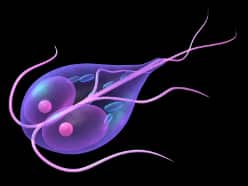- Endosymbiotic Theory: Mitochondria & Chloroplast are descendants of prokaryotic cells; they share clear structural/ biochemical features with modern prokaryotes.
- Cyanobacteria: blue-green algae; obtain their energy through photosynthesis
- Lateral gene Transfer: Gene from Mitochondria & Chloroplast MOVE from Mitochondria & Chloroplast to the nucleus
Evidence of Endosymbiosis (Happened after evolution of aerobic prokaryotes)
- Morphology: Form of both Mitochondria/ Chloroplast is similar to that of a prokaryotic cell

- Reproduction: cell cannot make a Mitochondria/ Chloroplast. They arise from preexisting ones via Binary Fission.
- Genetic Info: They have their own DNA; some have been moved by lateral gene transfer
- Transcription/ Translation: Both Mitochondria/ Chloroplast contain full transcription/ translation machinery
- Electron Transport: Mitochondria/ Chloroplast generate energy through ETC
What Drove Early Eukaryotic Cells?
- The arise of oxygenic photosynthesis via cyanobacteria gave rise to an extreme advantage (eukaryotes (increase size due to increase ATP production)
- Ex: Rubisco Assembly– LSU genes found in Chloroplast and SSU genes found in Nucleus; must coordinate for expression
Case Study: Giardia
- Giardia (Diplomonad) single cell eukaryote; very primitive eukaryote (NO mitochondria)

- Cpn60 encodes for mitochondrial protein, Giadria has Cpn60 gene but NO MITOCHONDRIA! Ancestor must have had it, but lost theme after lateral gene transfer.
- Advantage: Nucleus of nucleus taking control of cellular function integration of metabolism, gives nucleus CONTROL
Possible Reasons for Lateral Gene Transfer
- Some enzymes/ proteins are TOO BIG to be transferred back into mitochondria are these genes need to be expressed locally.
- Enzymes/ proteins that are used in the ETC degrade; tightly regulated by redox potential (ETC)
- Maybe genes can’t be explained in nucleus because mitochondrial genes are different from DNA genes
